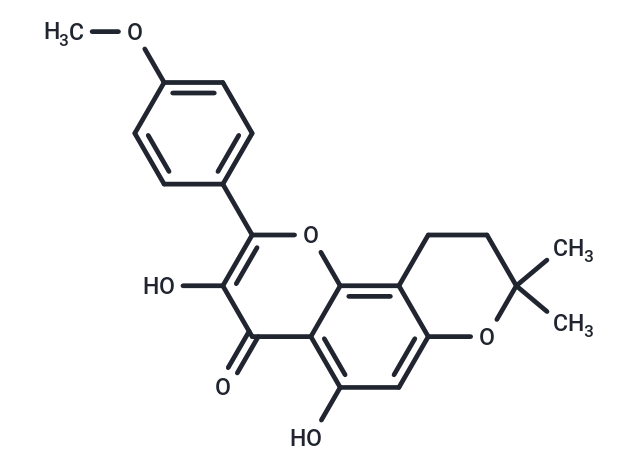 Your shopping cart is currently empty
Your shopping cart is currently empty

1. β-Anhydroicaritin exhibits immunosuppressive effect on the mouse macrophages stimulated by LPS. 2. β-Anhydroicaritin phytosomes can inhibit enhanced bone turnover induced by ovariectomy, improve BMD the biomechanical properties of vertebrae, without any stimulation on uterus. 3. β-Anhydroicaritin possesses significant protective effects on the zymosan-induced peritonitis mice, which might be associated with the regulation of Ca(2+); influx in macrophages and iNOS expression.

| Pack Size | Price | USA Warehouse | Global Warehouse | Quantity |
|---|---|---|---|---|
| 5 mg | $40 | In Stock | In Stock | |
| 10 mg | $68 | In Stock | In Stock | |
| 25 mg | $123 | In Stock | In Stock | |
| 50 mg | $183 | In Stock | In Stock | |
| 100 mg | $272 | In Stock | In Stock | |
| 1 mL x 10 mM (in DMSO) | $44 | In Stock | In Stock |
| Description | 1. β-Anhydroicaritin exhibits immunosuppressive effect on the mouse macrophages stimulated by LPS. 2. β-Anhydroicaritin phytosomes can inhibit enhanced bone turnover induced by ovariectomy, improve BMD the biomechanical properties of vertebrae, without any stimulation on uterus. 3. β-Anhydroicaritin possesses significant protective effects on the zymosan-induced peritonitis mice, which might be associated with the regulation of Ca(2+); influx in macrophages and iNOS expression. |
| Synonyms | Beta-Anhydroicaritin, Anhydroicaritin |
| Molecular Weight | 368.38 |
| Formula | C21H20O6 |
| Cas No. | 38226-86-7 |
| Smiles | COc1ccc(cc1)-c1oc2c3CCC(C)(C)Oc3cc(O)c2c(=O)c1O |
| Relative Density. | 1.349 g/cm3 |
| Storage | Powder: -20°C for 3 years | In solvent: -80°C for 1 year | Shipping with blue ice/Shipping at ambient temperature. | ||||||||||||||||||||
| Solubility Information | DMSO: 3.69 mg/mL (10.02 mM), Sonication is recommended. | ||||||||||||||||||||
Solution Preparation Table | |||||||||||||||||||||
DMSO
| |||||||||||||||||||||
| Size | Quantity | Unit Price | Amount | Operation |
|---|

Copyright © 2015-2025 TargetMol Chemicals Inc. All Rights Reserved.